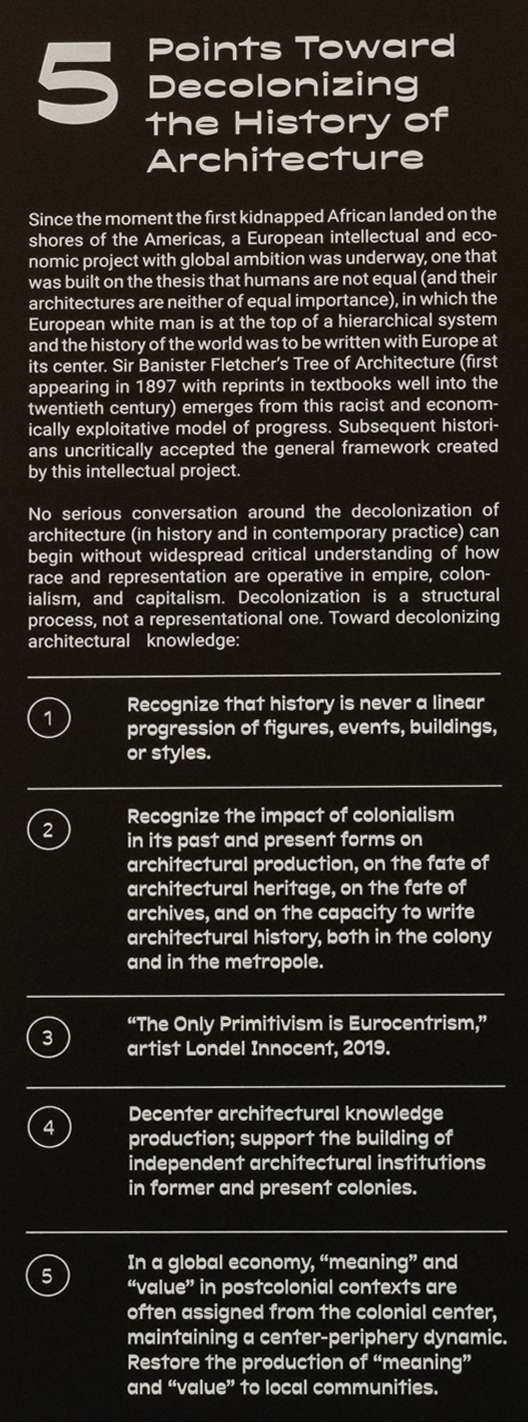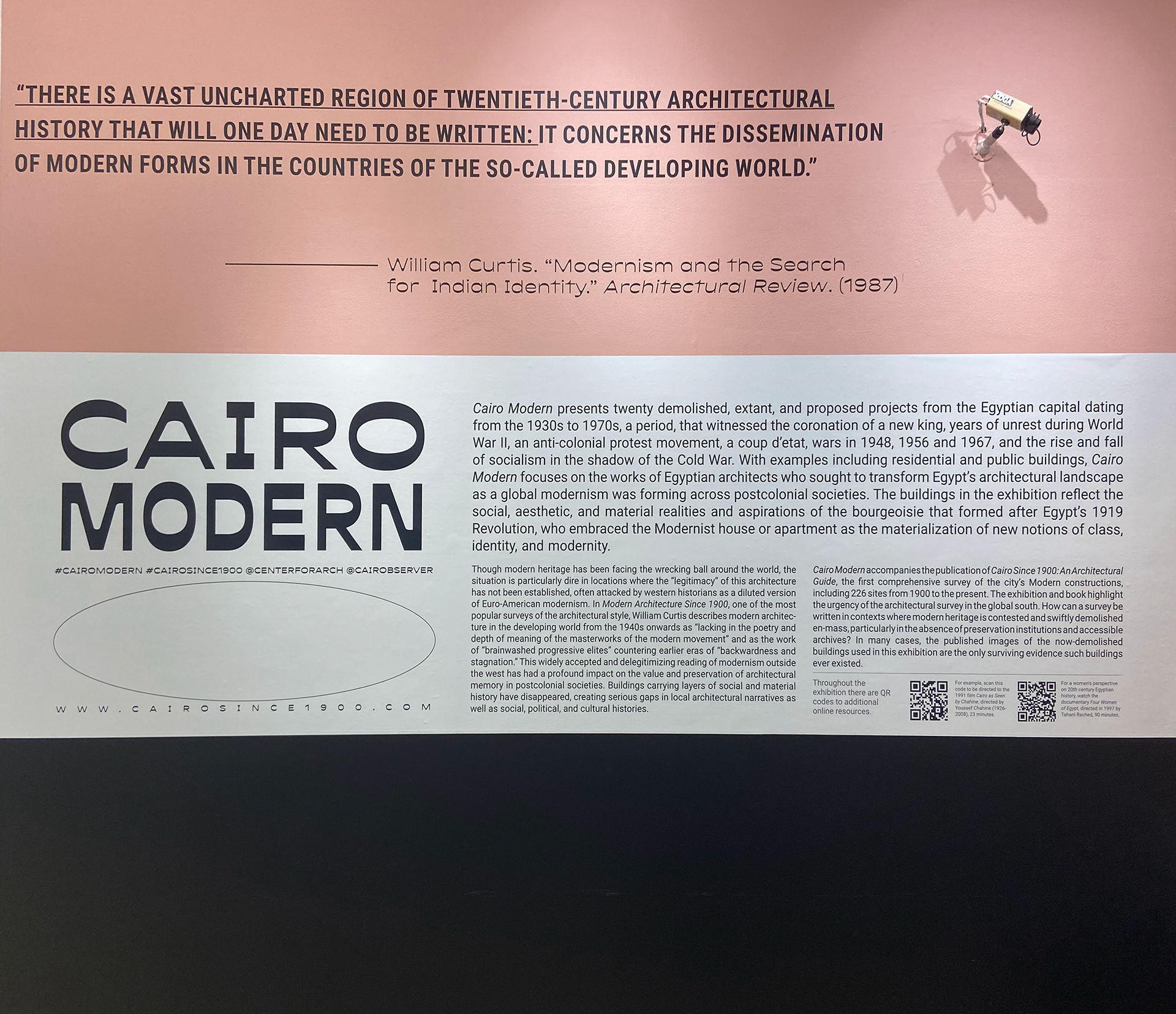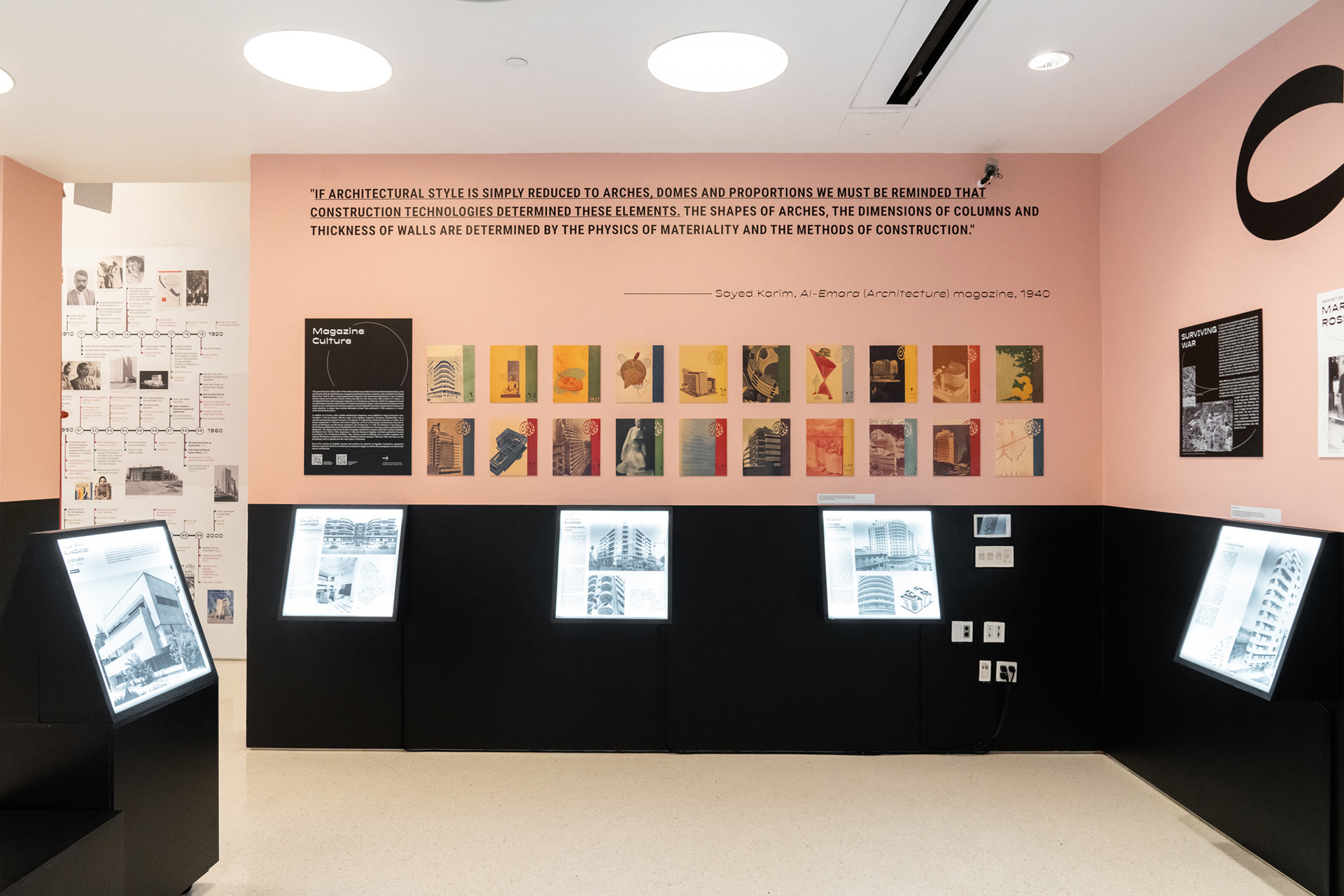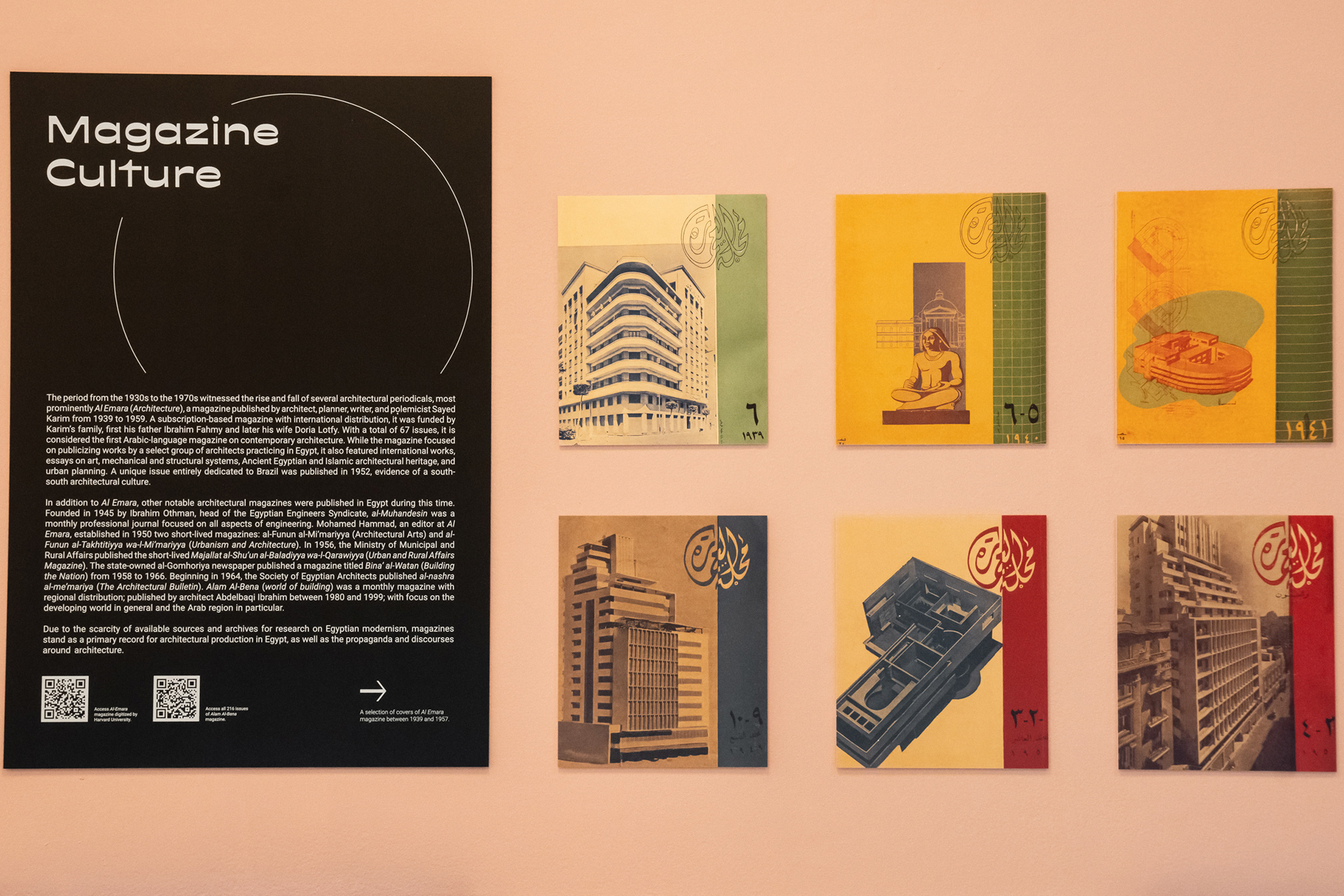The Cairo modern exhibit at the center of architecture breaks out of this orientalized gaze. It looks to contextualize the topic of modernism in Egypt after the 1919 revolution. The modernist house was embraced as "the materialization of new notions of class, identity, and modernity." (Cairo modern, 2021) The exhibition leaves the viewer with information to process rather than a reverse psychological experience by looking at this rich history with a goal in mind. While there is a critique that this non-orientalist gaze is because the curator- Mohamed Elshahed- is an Egyptian himself, it is at the very least a step in the right direction. The exhibit contextualizes modernism in Egypt on a global scale and thus adds to the conversation on global modernism. For instance, one of the most striking parts of the work was a wall covered in a timeline showing the progression of architecture, modernism, engineering, technology, culture, and many other advances concerning world history. (figure 1) Highlighting the work in a new light, this rewrites the narrative.
Furthermore, in the urban context, we begin to see this narrative taking shape in how we relate "Middle Eastern" countries to one another. The term "Arab cities" does not adequately describe the complexity of cities in the Middle East. There are significant differences among them in terms of history, culture, economics, and politics, making it helpful to distinguish between struggling cities due to religious and cultural conflicts and past or present despotic regimes. When analyzing Arab cities in the twenty-first century, it's critical to consider how the city has been imagined and developed in Western urban literature and an overview of the city's evolution and main characteristics, taking regional variances into account. Elshestawy, in his piece "The New Arab City," describes how “one of the key outcomes of recent urbanization processes is the emergence of what one arguably call two types of cities- cities that are forward and progressive versus cities that are mired in tradition, history, and political conflicts; a great divide marking the stark and very visible contrast.” (Elshestawy, 2015)
While this is an acute observation, the rationale of differentiating these types of cities as if one is better than the other is problematic. It is as if saying that retaining a heritage or culture makes a city inherently less modern or progressed. This common stereotype assumed of the Middle East is that the culture and religion are "backward" or less modern. Granted that there is a population of non-muslim residents across the Middle East at various percentages in each nation, the majority of the region practices Islam or, at the very least, is heavily influenced by the religion. “Islamic movements are thoroughly modern. They are thoroughly modern, first of all, because twentieth-century movements generated them. For example, Islamic movements are, for the most part, urban movements. They would have been impossible without the enormous growth of urban concentrations in the region- a relatively recent development in Middle Eastern history.” (Gelvin, 2020) Islamic movements have adopted similar twentieth- and twenty-first-century mass movement organizational and operational strategies and they address twentieth- and twenty-first-century expectations, such as the expectation that social justice and social welfare are fundamental rights to be enjoyed by all and that ensuring those rights should be a primary responsibility of every political system.
Another striking feature about this exhibit is that Elshestawy places quotes from other architects, scholars, and theorists that synthesize and support his points very well. An excerpt from Willaim Curtis reads, "modern architecture was created in Western industrialized countires... where avant-garde cliques attempted to produce an authentic modern style appropriate to rapidly changing social conditions... but its results were copied all around the world, and were often misapplied." (Curtis, 2013) In Abdelbaki Ibrahim's "Alam Al-Benaa"- meaning "world of building" in Arabic- he writes of how "the Arab architect remains a stranger in his homeland." (Curtis, 2013) Within the context of North African countries, after authoritative regimes fall, there is typically a small window before colonialism takes over. During and especially after that window, Arab architects were most advisors to the international architects being flown in to design. This meant that it was often the case that The Arab people were not designing Arab cities. This, in turn, emphasizes how exhibits like Elshahed's stand to better educate the public and better frame the context in which history is being written and how we go about telling the stories and building cities.




